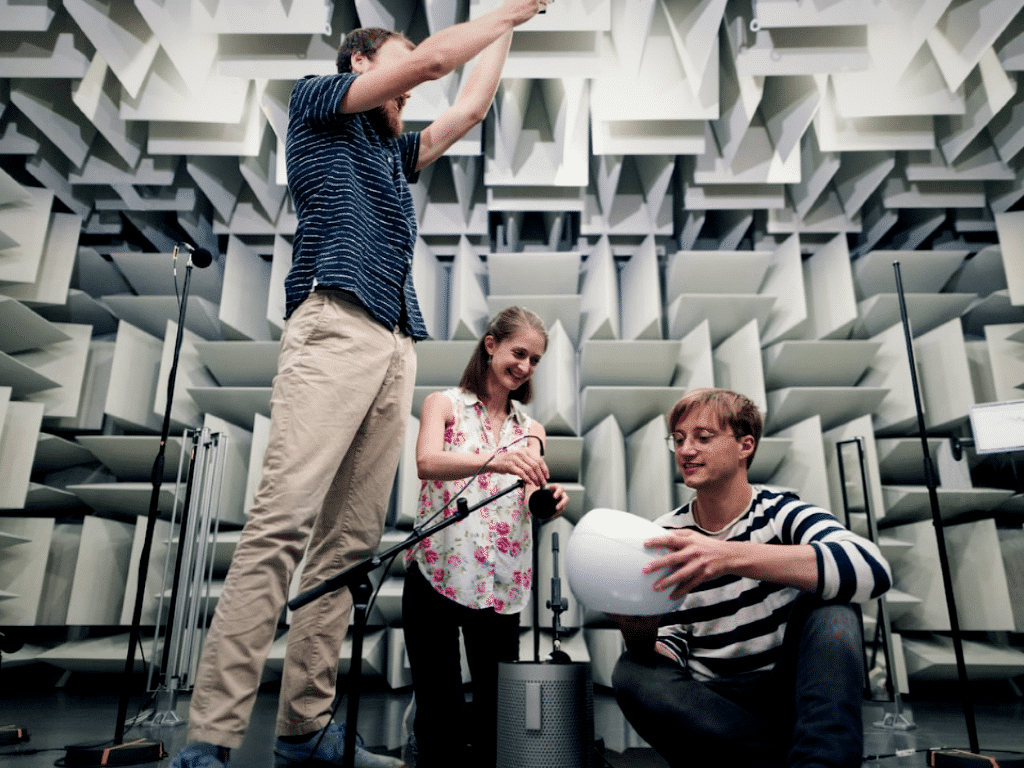One cannot stress enough the importance of creating a good acoustic environment for clean listening. It is important to ensure that the environment is free from any external noise that may interfere with the ability to accurately hear the produced sound. It is also essential to ensure that the room itself has been properly treated. This includes using acoustic panels and other sound-absorbing materials to reduce unwanted reverberation and reflections. This ensures that the heard sound is faithfully represented, rather than having a colored sound due to the room itself. Furthermore, it is important to consider the speaker’s position in the room, as this can also have an impact on what is heard. All of these elements combined can create a good acoustic environment for proper listening, allowing you to focus on the produced sound rather than the quality of the room or external noise.
1. Reduce background noise and reverberation
One of the most important steps in creating a good acoustic environment for clean listening is to reduce background noise and reverberation. There are two main methods for reducing these types of noise: acoustic treatment and sound correction. Acoustic treatment involves using sound-absorbing materials to reduce reverberation and echo, making the sound in a room clearer and more focused. Acoustic correction, on the other hand, uses diffusion to disperse sound waves in order to reduce noise levels and create a more balanced sound field. These two methods can be used to create a better listening experience and should be employed in any room where acoustic quality is important.
2. Choose an appropriate room size for optimal sound quality
When creating a good acoustic environment for clean listening, one of the key steps is to choose an appropriate room size for optimal sound quality. In a room that is too small, sound waves bounce off the walls, creating an echo effect that distracts and makes it difficult to focus on the music. On the other hand, a room that is too large will also have sound quality issues due to the long reverb time. To achieve optimal sound quality, the room size must be carefully calculated, taking into account acoustic treatment, sound correction, absorption, and diffusion.
3. Consider adding acoustic foam to absorb sound
The creation of a good acoustic environment for clean listening requires acoustic treatment, sound correction, absorption, and diffusion. One of the most effective ways to achieve this is by adding acoustic foam to your space. Acoustic foam panels absorb and reduce sound reflections, resulting in clearer and more precise sound. They also help to reduce reverberation, which is the bouncing of sound off walls, ceilings, and other surfaces. By using acoustic foam, you can create a more controlled environment for listening and recording music.
4. Use soft furnishings to reduce sound reflections
When it comes to creating a good acoustic environment for clean listening, furniture can play an important role. Soft furnishings such as sofas, armchairs and throws can contribute to reducing sound reflections. This is part of the process known as acoustic treatment, which helps to adjust sound in a room for optimal listening. Soft furniture absorbs sound waves, instead of reflecting them, which helps to correct sound and reduce echo. This absorption, as well as diffusion, can make a considerable difference in the sound quality of a room.
5. Invest in high-quality audio equipment to achieve the best results
In order to achieve the best possible listening experience, it is important to invest in high-quality audio equipment. This includes not only speakers, but also acoustic treatment, sound correction, absorption, and diffusion materials. Acoustic treatment helps to reduce the level of reverberation in the room, which allows for a more uniform and consistent sound. Sound correction enables correction of non-ideal acoustic environments for greater clarity and more natural sound. Lastly, absorption and diffusion materials help to reduce unwanted reflections, resulting in a more balanced and accurate sound. All of these components combined create a sound environment conducive to clean listening.
In summary, creating a good acoustic environment for clean listening is not as difficult as it may seem. With the right materials and arrangement, you can create a listening environment that sounds good and is pleasant to be in. Acoustic treatments can help reduce unwanted reverberation and echoes, while speakers and sound systems can bring music to life. With appropriate acoustic treatments and audio equipment, you can create a listening space that is both welcoming and acoustically pleasing.

